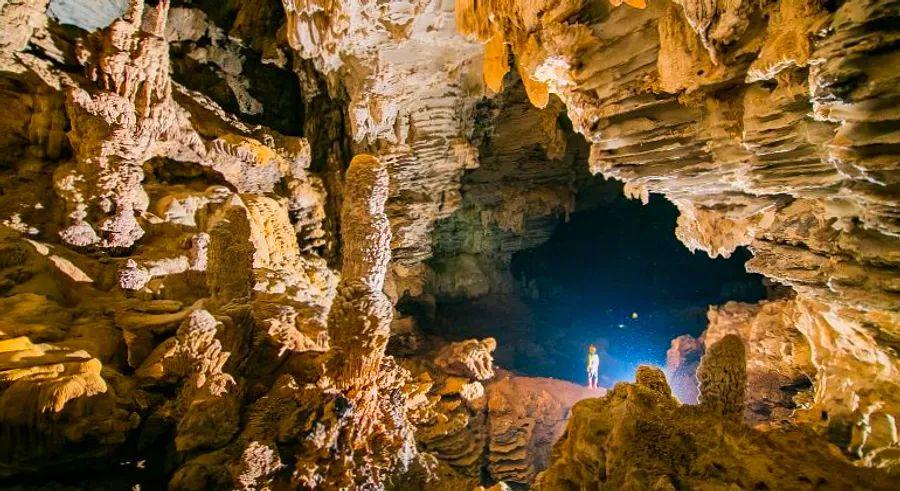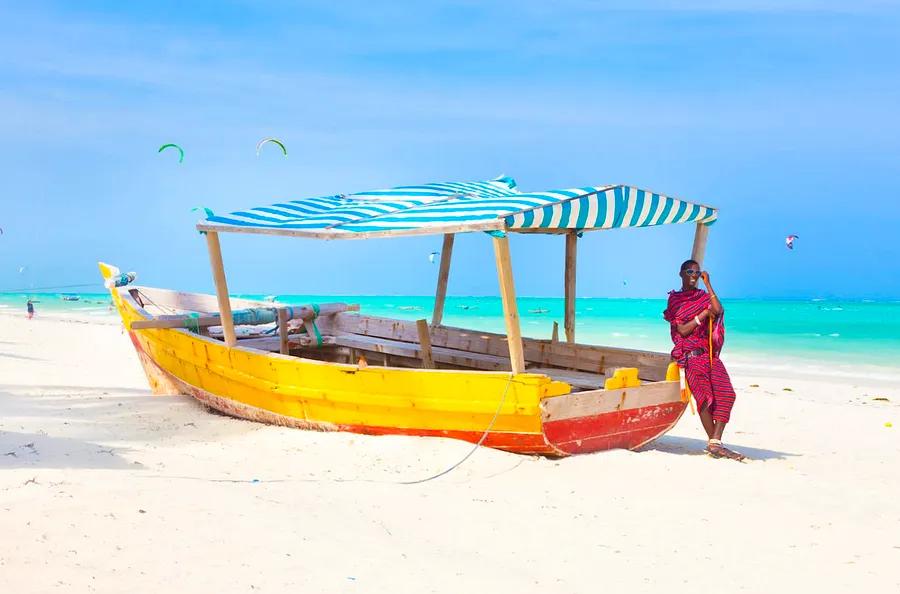Unveil Vietnam's Hidden Caves: 7 Must-Visit Underground Wonders

Known globally for its cuisine, pristine beaches, ancient heritage, and diverse natural beauty, Vietnam has now become a premier destination for caving enthusiasts. Over the past decade, it’s gained recognition as one of the top places for cave exploration.
Quang Binh province, located in central Vietnam, stands out for its famous UNESCO-listed Phong Nha-Ke Bang National Park – often referred to as the 'Kingdom of Caves'. The region saw a remarkable 3.9 million visitors last year, marking an 18.2% increase from the previous year.
According to Howard Limbert, technical advisor at Oxalis Adventure Tours in Quang Binh, 'Vietnam boasts some of the world’s finest caves. With its mild climate year-round, lush jungles, and awe-inspiring formations, it remains completely untouched—pristine and unspoiled.'
'My team at the British Cave Research Association has surveyed over 500 caves in Vietnam,' says Limbert. 'But we’ve only explored around 30% of the area. There are still countless caves waiting to be discovered.'
For adventurers eager to discover Vietnam’s most stunning subterranean landscapes, here are some incredible cave experiences you won’t want to miss:
Son Doong and Hang En
Renowned as the world’s largest cave, Son Doong spans an astonishing 38.5 million cubic meters (roughly 1.35 billion cubic feet) – so vast, it even harbors its own jungle within.
A recent underwater tunnel connecting Son Doong to the nearby Hang Thung cave may make it an additional 1.6 million cubic meters larger than previously believed.
In collaboration with the British Cave Research Association, Oxalis offers exclusive access to Son Doong, leading small groups of six to ten people on four-day treks from January to August each year during the dry season.
On the first day, adventurers embark on a jungle trek for about an hour before pausing for a traditional lunch in the village of Ban Doong.
After a few more hours of hiking, the group sets up camp inside Hang En Cave, the third largest cave in Vietnam, where they can swim in its underground rivers and enjoy a meal of local Vietnamese dishes.
The following day, hikers continue their journey toward the remote Son Doong Cave, where they will don safety harnesses and descend an 80-meter rock wall using ropes.
Inside Son Doong, travelers will spend the next two days exploring the cave's ancient fossils, dense underground jungle, towering stalagmites, and winding subterranean rivers.
The adventure concludes with a challenging ascent up the ‘Great Wall of Vietnam’—a steep 80-meter rock face that requires a combination of scrambling, rope climbing, and ladder navigation.
‘This isn’t just a casual walk. You’ll cross rivers, trek through lush jungles, and navigate mountains and cliffs, all while encountering unique wildlife, such as birds and monkeys found only in this region,’ says Limbert. ‘Many visitors find the scenery to be as awe-inspiring as the cave itself.’
Hang Va and Nuoc Nut

Oxalis offers an exciting two-day adventure, combining exploration of both Hang Va and Nuoc Nut caves in a single tour.
On day one, you'll embark on a two-kilometer trek to reach Nuoc Nut Cave, where you'll discover an astonishing underwater river waiting to be explored.
A 100-meter swim through the river passage will lead you to the entrance of Hang Va Cave, where you’ll camp overnight under the cave’s towering formations.
Although more accessible than Son Doong, this cave adventure still offers plenty of excitement, with opportunities to hike through dense jungle, climb over rocks, wade through underground rivers, and marvel at the surreal stalactites and stalagmites.
Hang Va is particularly famous for its stunning stalagmite fields, offering a truly extraordinary sight.
‘It features over 100 rare calcite formations called tower cones,’ says Limbert. ‘These are essentially stalagmites that formed underwater, and they’re incredibly unique!’
Tu Lan Cave System

Located in Quang Binh province, the Tu Lan Cave System consists of more than 10 caves and has gained immense popularity after being featured in the 2017 blockbuster film 'Kong: Skull Island.'
‘Many visitors come because of the movie, but they’re often surprised to find the scenery is even more breathtaking than they had imagined,’ says Limbert.
‘All of the campsites are situated near lakes or waterfalls, making them perfect for swimming on warm days. On our Tu Lan tours, you'll enter one cave, exit into another section of the jungle, and then return to another cave,’ says Limbert.
Oxalis offers tours ranging from one to four days, providing flexibility while limiting the number of visitors to preserve the natural beauty of the region.
‘We maintain strict control over the area, ensuring you rarely encounter other travelers. You’ll often have a cave all to yourself,’ says Limbert.
One of Tu Lan's most popular excursions is the two-day tour through Hang Tien, also known as the Cave of Fairies. This cave is famous for its stunning rock formations, resembling terraced rice paddies, and the magical swirls on the limestone walls.
The tour crosses through two caves—Hang Tien 1 and Hang Tien 2—taking travelers on a jungle trek before entering the vast, dry caves, which stretch for 5.5 kilometers and rise to 100 meters at their highest point.
‘These caves are much drier compared to others in the area, making them ideal for travelers who prefer not to swim during their tour,’ says Limbert. ‘They’re absolutely enormous – you’ll never feel claustrophobic inside these two caves.’
Paradise Cave
One of the stunning gems within Phong Nha Ke Bang National Park is Paradise Cave, also known as Thien Duong Cave.
In 2005, a local man discovered the entrance to the cave – a small hole in a rock, concealed by dense foliage.
Shortly after the discovery, the British Cave Research Association explored the cave’s interiors, marveling at its grandeur and beauty, before opening it to the public for exploration.
Today, it stands as one of Vietnam's most visited caves, with its otherworldly stalactites cascading from the ceiling like waterfalls and its sculptural columns leaving a lasting impression on every visitor.
The cave's immense size is equally astonishing: believed to be the longest dry cave in Asia, stretching over 31 kilometers, it’s vast enough to accommodate a jumbo jet.
Visitors can explore the cave in two ways: a one-kilometer walk along a series of well-lit wooden stairs or a more adventurous overnight trek that covers seven kilometers.
‘I always suggest the seven-kilometer hike because it offers a much richer experience, giving you at least six hours to explore deep within the cave,’ says Loc Nguyen, founder of the private tour company Xinchao. ‘It’s an experience you won’t forget.’
Tam Coc

Beyond Quang Binh province lies the UNESCO-listed Trang An Scenic Landscape Complex. Located in northern Ninh Bình Province, it’s another spectacular location to explore stunning caves.
‘What I love about Vietnam’s caves is that each one has its own distinct personality,’ says Nguyen.
‘The journey to the cave is often just as important as the destination. Sometimes, it’s not just about reaching the cave, but how you get there – whether by foot, hike, swim, or boat. It’s all part of the experience,’ he adds.
This is especially true for Tam Coc, meaning ‘three caves,’ located within the Trang An complex. The trio of caves – Hang Ca, Hang Hai, and Hang Ba – are all accessible via a scenic rowboat tour that begins at Van Lam village.
A leisurely three-kilometer boat ride along the Ngo Dong River takes you past shimmering rice fields and striking karst formations before arriving at the caves.
Hang Ca Cave is the largest of the three, stretching over 120 meters, while Hang Ba Cave is the smallest, measuring just 45 meters in length.
‘Since the journey through the caves is by boat, it’s a calm and effortless way to explore,’ says Nguyen.
‘The best time to visit is between March and May, when the rice fields are lush and green, creating a stunning sea of vibrant green and yellow,’ he adds.
Sung Sot

While Halong Bay is perhaps best known for its thousands of towering limestone islands emerging from the water, it also features an impressive array of caves – at least 59 of them listed so far.
The most famous cave in the region is Sung Sot, or Surprise Cave, located on Bo Hon Island. It was first discovered by French explorers in 1901.
Spanning 10,000 square meters, the cave is vast and open, featuring a mesmerizing collection of stalactites and stalagmites, many of which resemble various forms of plant and animal life.
‘There are many local legends and myths surrounding the rock shapes and patterns, which can add an element of fun for visitors,’ says Nguyen.
‘Most boat tours include a stop at Sung Sot, where passengers disembark to explore the cave for a couple of hours,’ adds Nguyen.
Luon Cave
Although much smaller than Sung Sot, Luon Cave feels like a hidden portal to a secret world tucked away within Halong Bay.
This crescent-shaped grotto, only 60 meters in length and 4 meters high, can only be accessed by kayak or a small boat.
When the water levels are high, visitors must crouch down to pass through the low entrance.
Inside, the cave exudes an eerie atmosphere, with cool air and crystal-clear blue water below, and a narrow exit leading out ahead.
Beyond the cave’s opening lies a tranquil lagoon, encircled by towering limestone cliffs, with tribes of monkeys adding to the idyllic scene.
Evaluation :
5/5



